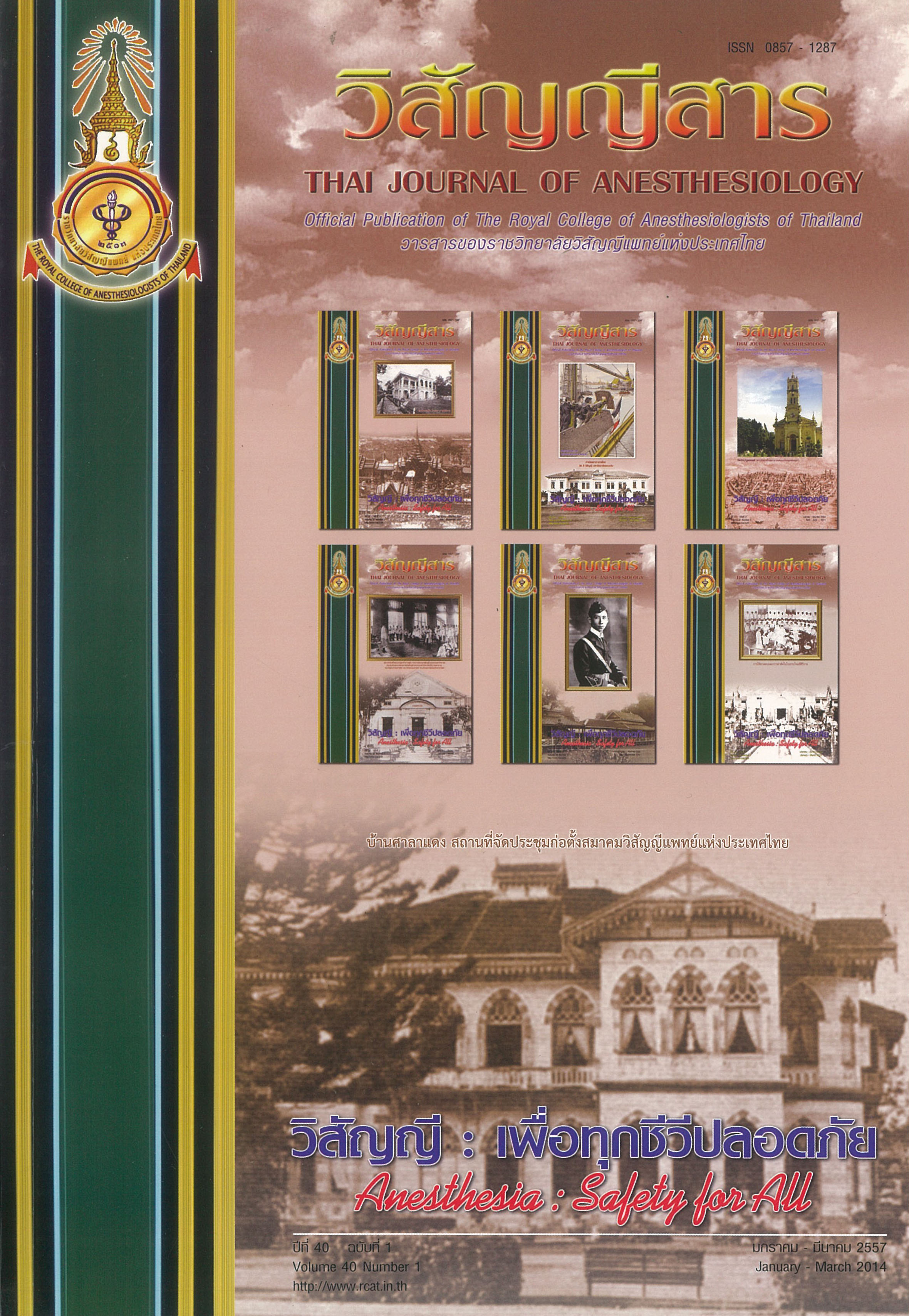Perioperative Blood Transfusion in Cardiac Surgery at Thammasat University Hospital: A retrospective review
Main Article Content
Abstract
Background: Blood products transfusion is common during cardiac operations despite increasing evidence suggesting potential adverse effects. Blood products should be used with appropriate consideration between risks and benefits.
Objective: To review Thammasat University Hospital records with respect to transfusion practice in cardiac surgery as part of initiating management strategies to minimize the need for perioperative blood products transfusion.
Method: Retrospectively, the hospital database was analyzed from January 1, 2011 through July 31, 2011. All adult patients who underwent cardiac surgery with cardiopu - lmonary bypass were reviewed for blood product transfusion and associated factors.
Result: During the study period, 64 patients met inclusion criteria. Each patient received blood product with median of 10 (1 - 33) units including 5 (1 - 5), 4 (0 - 14), and 1 (0 - 4) units of pack red blood cells, fresh frozen plasma and platelets respectively. Factors significantly related to the transfusion of red blood cells of more than 4 units were preoperative hematocrit, cardiopulmonary bypass time, aortic cross clamp time, operation time, hematocrit at ICU on arrival. For transfusion of fresh frozen plasma, total chest drain volume, incidence of complications, and length of hospital stay were related factors. However, preoperative hematocrit was an independent risk factor from multivariate analysis.
Conclusion: Blood product transfusion rate at Thammasat University Hospital remains high. The study showed transfusion of pack red cells of more than 4 units in cardiac surgery is associated with multiple factors. Preoperative hematocrit was identified as an independent risk factor.


